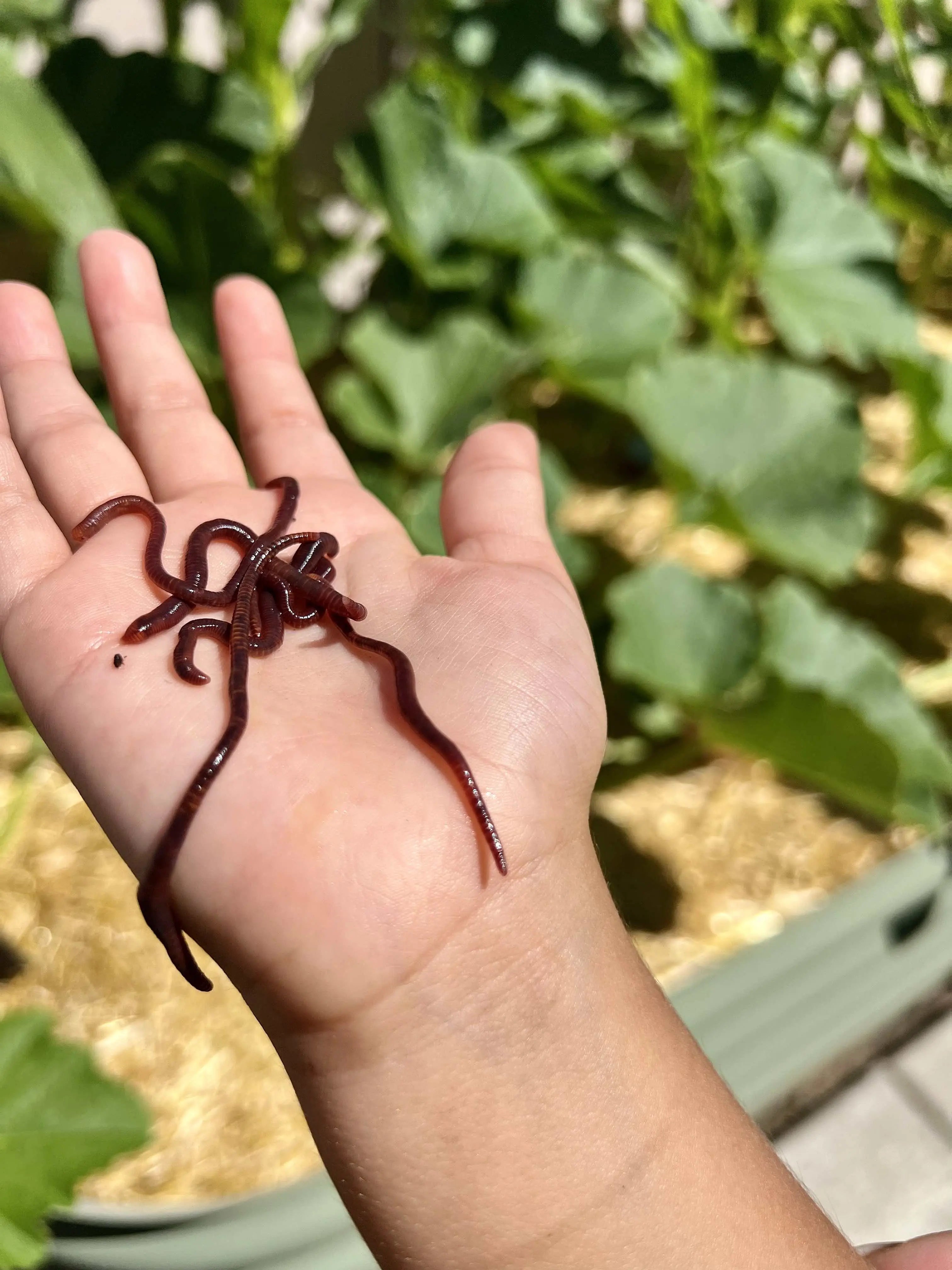Red Wiggler Worms - Vital for Healthy And Balanced and Effective Gardens
Red Wiggler Worms - Vital for Healthy And Balanced and Effective Gardens
Blog Article
Red Wiggler Worms Demystified: Opening the Tricks of Vermiculture for Greener Living and Nutrient-Rich Soil
In the realm of lasting methods for enriching dirt high quality and promoting eco-conscious living, red wiggler worms play a crucial yet commonly ignored role. Red Wiggler Worms. Comprehending the complexities of caring for these worms, optimizing their setting, and harnessing their spreadings can lead to a greener lifestyle and healthier dirt for plants to flourish.
The Duty of Red Wiggler Worms
Red Wiggler worms play an important duty in composting systems by effectively breaking down raw material into nutrient-rich castings. These voracious eaters eat a variety of organic products, such as cooking area scraps, yard waste, and paper products. As they feed, the worms' digestive system procedures break down the raw material right into a penalty, dark, and nutrient-dense product referred to as worm spreadings or vermicompost.
The spreadings produced by Red Wiggler worms are extremely beneficial for dirt wellness and plant growth. They are rich in crucial nutrients like nitrogen, phosphorus, and potassium, which are essential for supporting healthy plant advancement. Furthermore, worm spreadings have useful microbes and enzymes that assist boost soil structure, increase water retention, and boost nutrient uptake by plants.
Benefits of Vermicomposting

Additionally, vermicompost, the nutrient-rich output of vermicomposting, works as an outstanding natural fertilizer and dirt conditioner. It improves dirt structure, boosts soil oygenation, and enhances dirt wetness retention. These residential properties add to much healthier plants with stronger origin systems and better resistance to parasites and illness. Vermicompost additionally enriches the dirt with vital nutrients like nitrogen, potassium, and phosphorus, advertising plant development and overall soil fertility.
Furthermore, vermicomposting supports sustainable horticulture practices by providing a all-natural and chemical-free alternative to artificial fertilizers. Red Wiggler Worms. This eco pleasant method not only improves the dirt but likewise helps in reducing reliance on unsafe chemicals, promoting a greener and more sustainable means of horticulture
Setting Up a Worm Bin
When developing a worm container for vermicomposting, proper setup is crucial to ensure the success of the composting process. The initial action in establishing a worm container is picking an appropriate container. This can be a plastic container or wood box that gives enough space for the worms to move and has correct water drainage holes to protect against waterlogging. Next, a bedding material such as shredded newspaper, cardboard, or coconut coir should be included in the container. This bed linens her response supplies a comfortable atmosphere for the worms and helps maintain dampness degrees.
After including the bed linens, introduce the red wiggler worms to the bin. It is suggested to begin with a handful of worms and slowly increase as they increase. The worms should after that be given with food scraps such as click this site fruit and vegetable peels, coffee grounds, and eggshells. It is important to prevent adding meat, dairy products, oily, or salty foods to stop bring in bugs and creating undesirable odors.
On a regular basis check the wetness levels and temperature level in the worm container to make certain optimal conditions for the worms. With appropriate arrangement and upkeep, the worm container will efficiently transform natural waste into nutrient-rich garden compost for your plants and yard.
Gathering Worm Spreadings
To efficiently gather nutrient-rich worm spreadings from your vermicomposting system, a systematic harvesting technique is necessary. There are a few essential actions to comply with to make certain an effective process when it comes time to gather the worm castings. Stop adding fresh food scraps to one side of the worm bin for a couple of weeks before harvesting. This urges the worms to migrate sideways with fresh bed linen and food, making it much easier to scoop out the castings from the other side.

Troubleshooting Common Issues
Identifying and attending to usual obstacles that may arise during the vermicomposting process is important for preserving a healthy and efficient worm container. One usual concern that vermicomposters encounter is overfeeding. Adding excess food scraps can cause an accumulation of wetness and acidity in the worm bin, potentially hurting the worms. To stop this, feed the worms in small amounts, ensuring that the food scraps are effectively damaged down prior to including more. pop over here One more problem is unpleasant smells rising from the worm container. Foul smells suggest anaerobic conditions, typically created by overwatering or insufficient ventilation. To treat this, change the moisture degrees by adding completely dry bed linen materials like shredded paper or cardboard and increase oygenation by turning the bed linens frequently.
Additionally, if the worm populace is declining or the worms show up harmful, maybe because of environmental stress factors such as extreme temperatures or pH degrees. Checking these variables and making essential adjustments is crucial for the wellness of the worms. By repairing these common problems immediately, vermicomposters can ensure a smooth and successful vermicomposting procedure while keeping a flourishing worm populace.

Final Thought
In final thought, red wiggler worms play a vital function in vermiculture by breaking down natural issue right into nutrient-rich dirt. Setting up a worm bin is vital for successful vermiculture, and gathering worm castings offers beneficial garden compost for gardening.
As they feed, the worms' gastrointestinal procedures damage down the organic matter into a fine, dark, and nutrient-dense product understood as worm spreadings or vermicompost.
The spreadings created by Red Wiggler worms are highly beneficial for soil health and wellness and plant development. Adding excess food scraps can lead to an accumulation of moisture and level of acidity in the worm bin, potentially harming the worms.In addition, if the worm populace is decreasing or the worms show up unhealthy, it can be due to ecological stressors such as severe temperatures or pH levels. Setting up a worm bin is vital for effective vermiculture, and gathering worm spreadings offers beneficial compost for horticulture.
Report this page